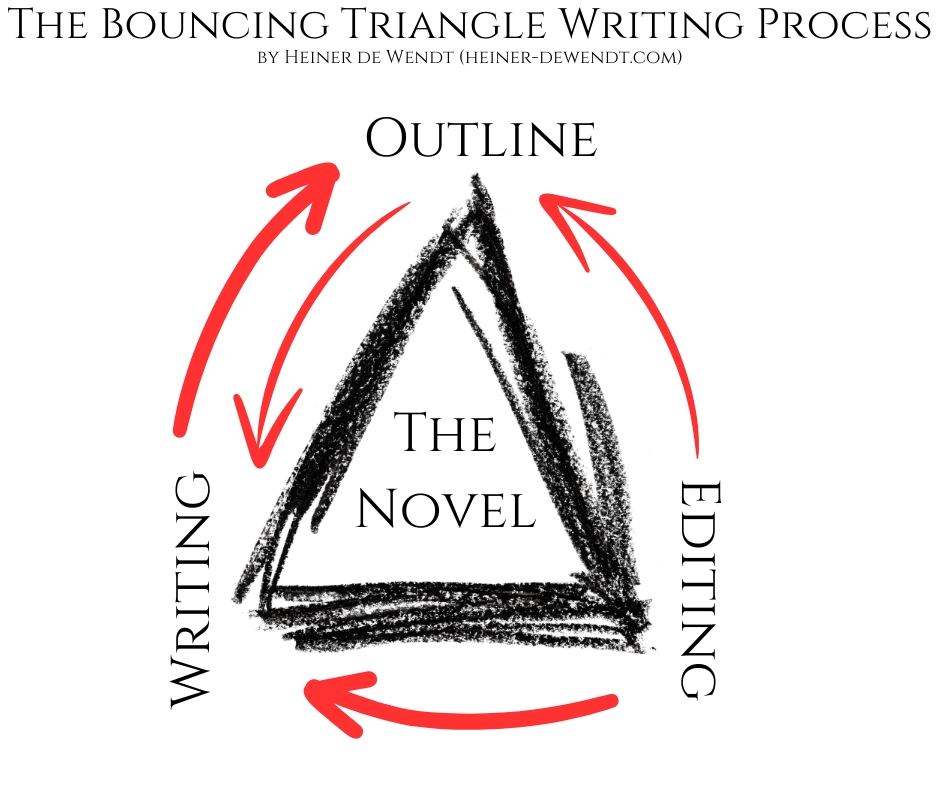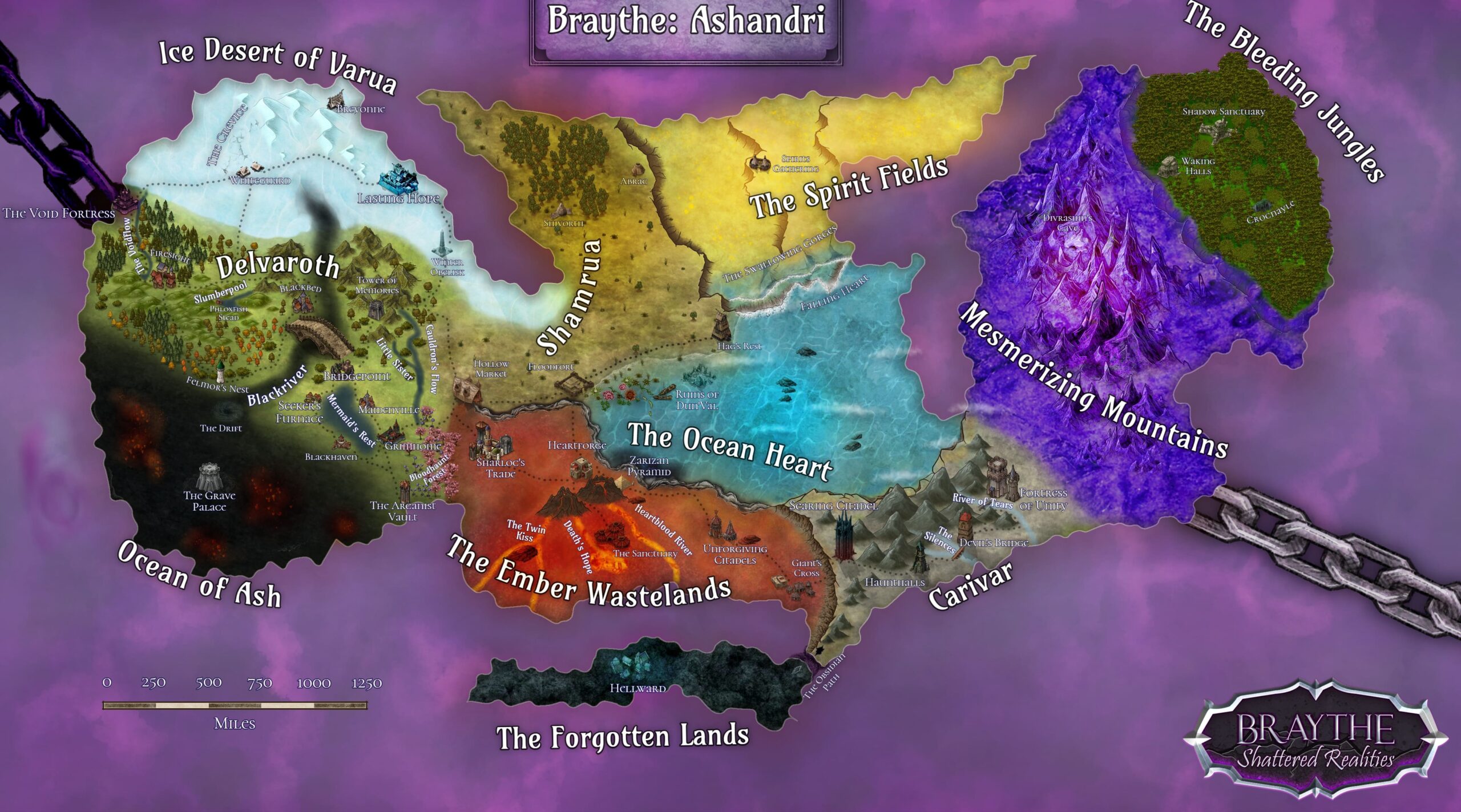My writing process: The bouncing triangle
As a child, I’ve started writing with short stories, and as I grew older, they became longer. I remember that my longest stories back then were about 40-50 pages (A4 format), and I wrote them down with no previous planning in a day or two.
In my first attempts at writing novels, I tried the same approach (writers call this “pantsing”). And every time, I got to about 100 pages… and then failed. I like to tell complex stories, and things just got confusing. I had timeline problems, I didn’t remember important details from the beginning, I had followed creativity into paths that led astray from the actual plot. Put short, it always ended up as a mess. (This is my harsh, self-critical judgment. It was probably better than that, but either way, it didn’t feel salvageable. At least not with a reasonable amount of work.)
Realizing my problem, I went on to find solutions. There’s a lot of advice for writers out there. Unfortunately, this advice is often very black and white, and absolutely not working for my neurodivergent brain. Of course, I always only realized that after trying a new approach. In the end, I needed over twenty years from my first attempt at a novel to actually writing my first novel.
The foundation of my new process was to combine three story structure concepts into one. You’ve probably heard of the Three Act Structure for stories, dividing stories into the Setup, the Confrontation, and the Resolution. But there are many other concepts, and it’s a task for every author to find out which one works for them (potentially even for each story they write). In my case, I felt the Three Act Structure was a good fit – but it also lacked things.
So I looked further. Another famous concept in Western fiction is the Hero’s Journey, and in recent years the so-called Save the Cat concept has become very popular, too. Both had elements I found very appealing, but none felt complete for me. Eventually, I decided to put in the work and combine them into one big thing.

Note that, while I’ve put a lot of work into this, it’s not really an original concept, just a mash-up of three existing structures. Credit where credit is due 😉
Based on this new structure I made, I began to plan my first novel. Some authors plan every single scene they write – but I knew this would only exhaust me and limit my creativity (or I’d ignore my plans when writing). So, my outline is a very rough one. I wrote down the big milestones in the story, making sure I’d get a cohesive and logical plot. Then, I started writing.
What happens then is that the story kind of develops on its own. I don’t plan every detail, I come up with many things while writing, or while thinking about the next few scenes. And sometimes, things just happen, which can add to or change elements in the original plan.
When that happens, I change or extend my outline. But the important part is that I still have one. It’s a living, changing thing, adapting to the story as it evolves. Yet, I don’t get lost anymore. I know exactly where I’m going, even when things change.
Another thing I do while writing my first draft is editing. A typical advice to writers is not to edit before the first draft is finished. That simply doesn’t work for me. While editing my finished chapters, I sometimes notice a part that doesn’t really pan out. A character’s motivation might not be strong enough, the events might feel a bit too boring, etc. When that happens, I try to figure out the necessary changes as early as possible. Sometimes, this adds entire subplots or new characters to the story, which I then add to the outline again. And that – you guessed it – helps me keeping an eye on where the story goes and what has to happen next.
And there you have it: The bouncing triangle.

Put short, I start with the outline, but then I keep switching between writing, editing and adapting the outline. Both editing and writing can affect the outline. Editing naturally affects the writing (as I rewrite parts of the story), and the outline affects my writing in offering me guard railings (so I don’t crash and burn).
There’s another advantage for me: The process of editing becomes a little less daunting. When I’ll have finished my first draft, a part of the editing is already done. There’ll still be a lot to do, for sure, but I won’t start editing at the very beginning.
With this new process, I’ve already passed the stage where all my previous novel projects failed – and I still know exactly what I’m doing 😉
And that’s it – my overall writing process!
